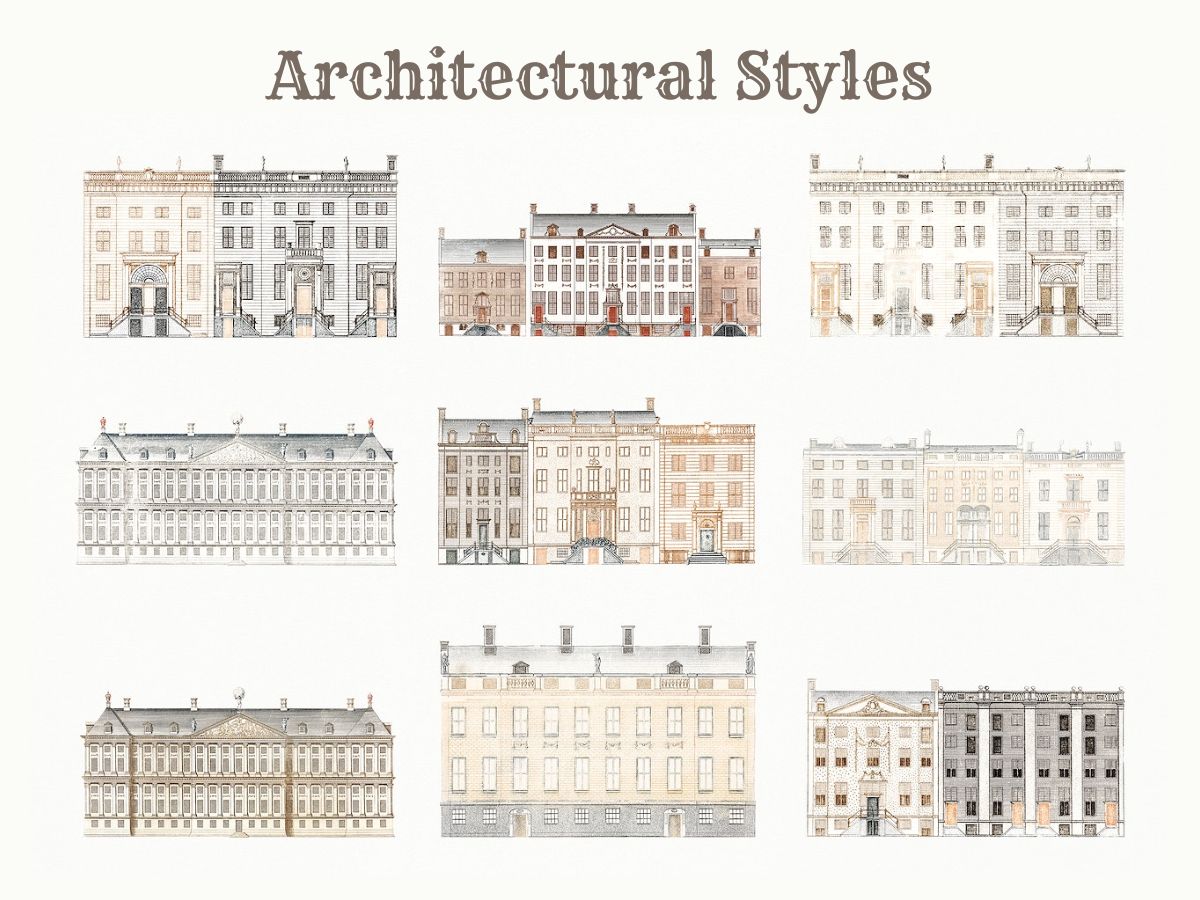The environment is rich and varied, with architectural rugs with overlapping styles and movements that often travel around the world, making them suitable for the needs of a wide variety of climates, landscapes, and cultures. The following is a detailed rundown of 10 popular architectural styles throughout history.
Top 10 Architectural Styles:
Classical Architecture
The term umbrella refers to a style of buildings originating from ancient Greece and Rome; classical architecture has influenced design movements worldwide, including Neoclassical and Greek Revival architecture. Classic architecture focuses on symmetry and proportion, columns with door details, and Ionic or Victimized.
Marble design motifs, the use of bricks and concrete, and classics such as interior molds, medium tone ceilings, boxing events, around decorative doors, and damaged peduncles such as damaged pediments at entrances. While the classical architecture was replaced by large-scale modernism and contemporary architecture in the 20th century, classical architecture was created, which was again labeled as the “new classic” style.
Neoclassical Architecture
Neoclassical architecture refers to the building style created during the revival of Greek and Roman architecture that began around 1750 and developed in the 18th and 19th centuries. At the same time, Greek Awakening architecture uses classic elements, such as Doric, Ionic, or Corinthian columns.
Those Greek Awakening architecture are more complete than a beautiful classic version marked by complete revivals and often a complete and often beautiful classic version. Some of the most famous and easily recognizable institutional and government buildings in Europe and the United States have neoclassical styles, such as the White House and the U.S. capital formation.
Greek Revival Architecture
Greek Revival architecture is inspired by the symmetry, proportion, simplicity, and elegance of the 5th Ancient Greek Temple of SM. Our. In the U.S., the Greek revival reached extreme popularity from 1825 to 1860, and the U.S. In first major national architectural style, architecture spread throughout the country from the East Coast to the West Coast, except for state capital buildings, banks, New England, churches, urban lines, gallery huts, and southern plantation houses.
Inspired by the birthplace of democracy, Americans borrowed classic elements to design buildings for the new democracy at the time, such as columns with Doric, Ionic, or Corinthian detailing, painted in the white marble used in Ancient Greece.
Copying; gradually tilted the roof in front of the saddle roof, And wide doors all around. Has a simple layout that is quite open in the interior decoration; beautiful proportions; high living room window and door; ceiling decorative plastering; plain plaster wall; wide board floor; And decorate a mental ceiling.
Industrial Architecture
An umbrella term used to describe buildings built to meet industrial needs, the industrial architecture includes a variety of buildings and styles that combine functionality and design, and industry can be found around the world, such as That factory, warehouses, castings, steel, steel factories, water towers, seed silos, refining, broilers, refineries, power plants, and other beneficiation structures. The first industrial buildings were built in the 1700s during the First Industrial Revolution, particularly in Britain from 1760 to 1840.
But today, when we refer to industrial architecture, we mostly refer to buildings that widely use new materials such as metals and concrete and those mass-produced by the last Second Industrial Revolution. In response to the method has appeared in the answer.
The early 20th century formed the building blocks for modern architecture. Features of industrial architecture can include large open floor plans, high ceilings, raw materials such as concrete, brick, and metal, a lack of ornaments in front of the building, Bricks, work channels, open pipelines, and large metal grid windows.
Bauhaus Architecture
Bauhaus architecture originated from an influential German school founded by Walter Gropius (1883–1969) in the early 20th century with an ideal aim that a new form of architecture and design would help the world rebuild post-World War I society. I was prepared. I had to finish the war. Discussing the promotion of rational functional design by synthesizing art, craft, design, architecture, and technology adopts a form that follows, more or less, work.
Not all chest buildings look the same, but in general, they eschew decoration to focus on a simple, rational, functional design; Use simple geometric shapes such as triangles, squares, and circles; the destruction; uses modern materials such as steel, glass, concrete; flat roof; glass curtain wall; smooth front.
The Bauhaus developed into an international style when Gropius and other Bauhaus were core members in America in the 1930s. I came and then influenced the development of modernity in the 1950s and 60s. Bauhaus architecture and design principles still influence the shape and size of everyday objects.
Victorian Architecture
The term Victorian architecture does not refer to certain styles but the rules of Queen Victoria from 1837 to 1901. The style originated from Britain and still largely defines the architecture of towns and cities, but Victoria’s architecture spanned the era. The architecture of the Victorian era is marked by nostalgic service to the ornaments’ interior design and decorations.
Some features that will help you see a Victorian from the outside include vertical slopes, plain or colored brick; gables decoration; final roof; slide sling and bay window; octagon or round tower; and a generous wraparound roof. The interior often includes graceful stairs, a complex layout; high ceilings; intricately carved wooden frames; and decorative fireplaces.
Arts and Crafts Architecture
The Arts and Crafts movement is a response to the decorative and large-scale style created by Victoria Architecture, which includes handcrafted designs and the use of natural materials such as stones, bricks, wood, copper details, and inscribed bronze metals.
In the mid-19th century, the Arts and Crafts movements in England, and in the early 20th century, the U.S. Many architectural styles appeared in the Arts and Crafts movements, including the popular Craftsman and Bungalow-style homes, simple structures built into the idea that was originally designed for working-class families.
The houses of art and expertise are symmetrical; low to the ground; Designed for minimum efficiency and maintenance; Often, large fireplaces provide convenience; low pitched roof with wide overhang; open the inner beam; bookshelves, chairs, and window cabinets; and several windows with a small pane; main roof; And the floor plan opened.















